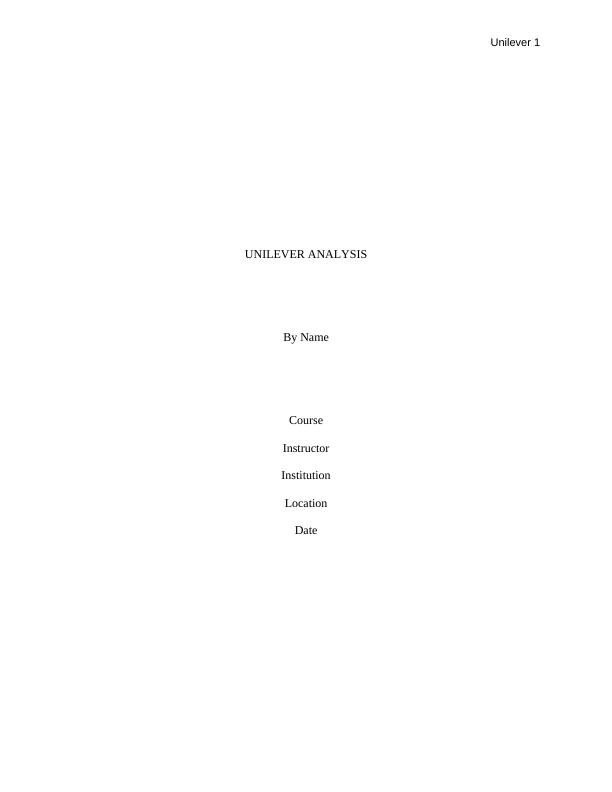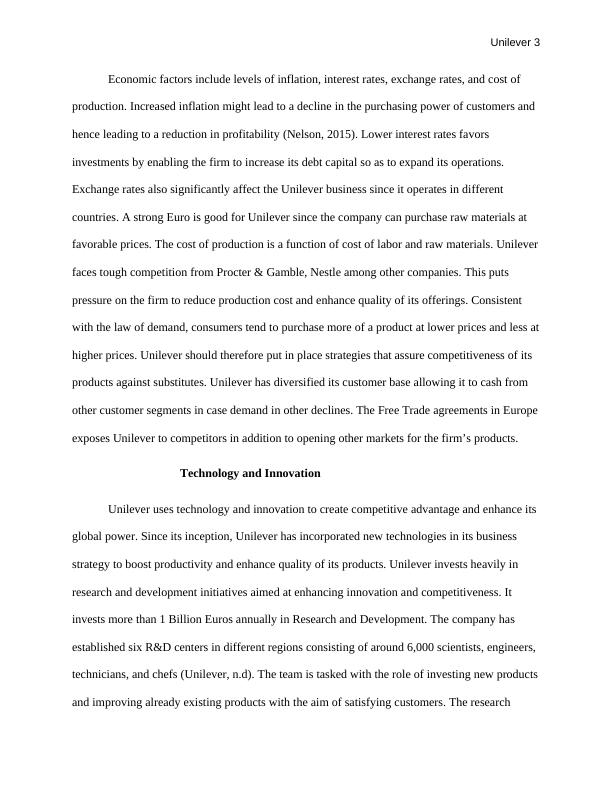Unilever Analysis: General and Industry Environmental Analysis
9 Pages2168 Words230 Views
Added on 2023-06-04
About This Document
This analysis provides an overview of Unilever's general and industry environmental analysis. It covers political, legal, economic, social, technological, environmental, and legal factors affecting the company. The study also uses Porter's five forces analysis to assess the five major competitive forces of Unilever.
Unilever Analysis: General and Industry Environmental Analysis
Added on 2023-06-04
ShareRelated Documents
End of preview
Want to access all the pages? Upload your documents or become a member.
Global Business Environment Assesment Report
|5
|1015
|13
Godiva's PESTLE analysis pdf
|11
|2422
|1100
Brexit and Its Implications on UK International Businesses
|10
|2809
|425
SWOT Analysis of TWG - An Overview
|6
|864
|23
Kinder PESTLE Analysis: Examining External Factors
|2
|852
|55
ALDI And Its Environment
|1
|748
|170



